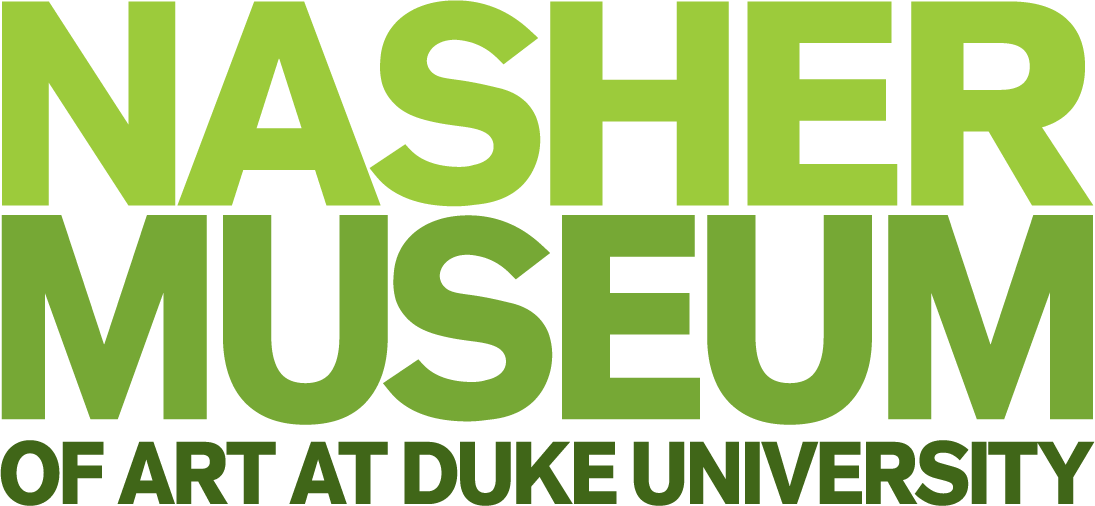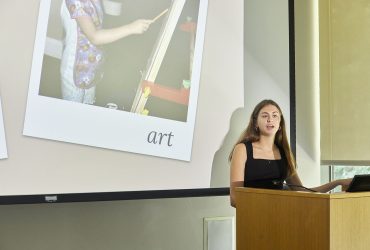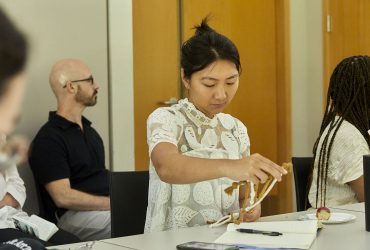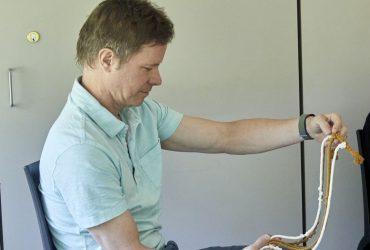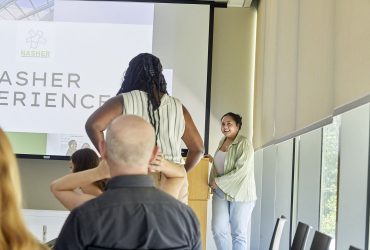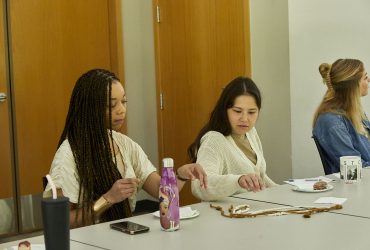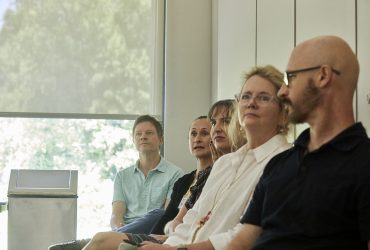Multi-sensory experiences create more focused and memorable museum experiences. Touching objects are a meaningful thing to incorporate into classrooms and gallery tours.
Abigail Hartemink, Duke Class of 2025, classical civilizations and art history double major with a concentration in museum theory and practice

Rising Duke junior Abigail Hartemink followed several threads from her childhood to a summer internship at the Nasher Museum: a love of art, a passion for sewing and textile work, a fascination with ancient cultures and an aptitude for art history.
One of her projects was to research works of art in the museum’s Arts of the Americas collection. Her goal was to choose a work that could be reproduced as a “touching object” — a tool for museum staff to teach visitors about art they cannot touch.
“Tactile exploration of art can deepen our understanding of the piece,” she said, “and it can be especially important for children, visually impaired visitors and visitors to the Reflections Program.”
Abigail settled on a quipu, a 1,000-year-old textile used as a record-keeping device by cultures across ancient and colonial Peru. The quipu in the Nasher’s collection is a cluster of cotton strings, each with knots of various sizes.
“Each knot has a different numerical value,” Abigail explained. “The quipu is organized by rows of ones, tens, hundreds and so on, and you read each strand. We’re not sure about their exact use, but they could have been used for recording population, crops, dates, some kind of a narrative. We’re also not sure about what the different colors of strings might have meant.”
Abigail examined the quipu closely with a magnifying glass, trying to understand what the knots meant. That was difficult, she said. “I had a lot of trouble understanding it without being able to touch it.”
Over the course of several weeks, Abigail created three duplicate quipus for visitors to touch. She took the idea of record keeping and made her own key. Brown strings are dates, white strings are amounts and yellow strings are locations. She chose significant numbers: the date that the Nasher was founded (2005), the date that Duke was founded (1838), the number of strands of the Nasher’s quipu (46), the number of works in the Art of the Americas collection (3,235).
“I was so excited about making a touching object for it,” she said. “Because if you’re able to hold the knots, feel them, look at them up close, it’s a lot easier to understand what they mean.”
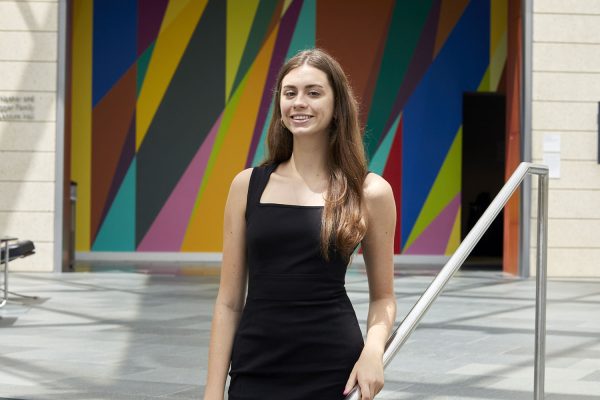
I really loved doing research and discovering things about the objects. I've always loved reading and writing but I often get burned out during the school year. So it was fun to sort of rediscover a love of reading and writing and research at the Nasher.
Abigail Hartemink (photo by Jade Wilson)
A Cohesive Program

The Nasher Summer Internship program is a cohesive program overseen by the museum’s Academic Initiatives Department.
Ellen Raimond, Associate Curator of Academic Initiatives, and Gabrielle Tenedero, Museum Educator for Student Engagement, have professionalized the internship program that begins with matching students with supervisors in the marketing, education, curatorial, registrar and development departments. Students get to know one another and Nasher staff during lunch meetings, outings to nearby art museums and galleries and professional development activities that give them a glimpse into a museum career.
I learned a lot about different roles in the museum which was helpful for me because I'm pretty undecided about what I might go into. I look forward to continuing to intern at the Nasher this upcoming academic year.
Abigail Hartemink
